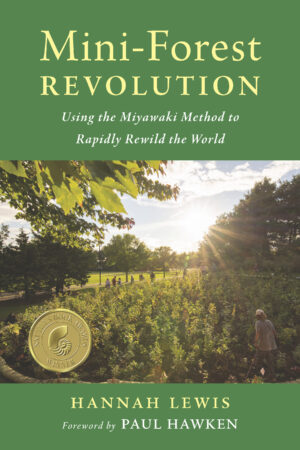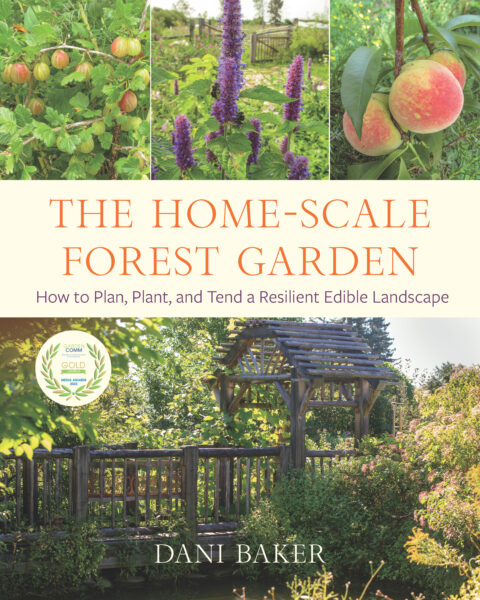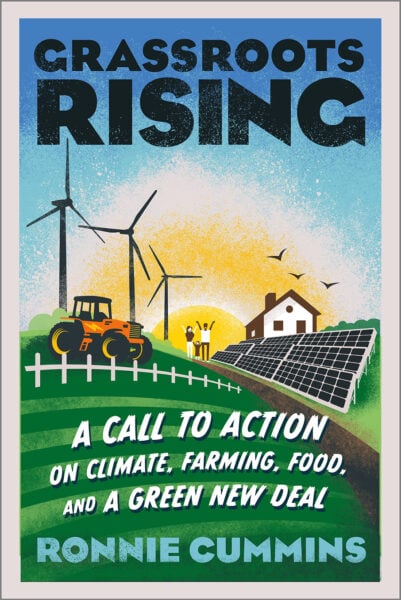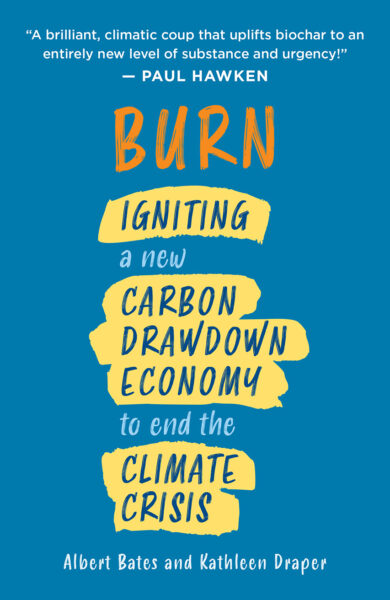The Magic of Mini-Forests
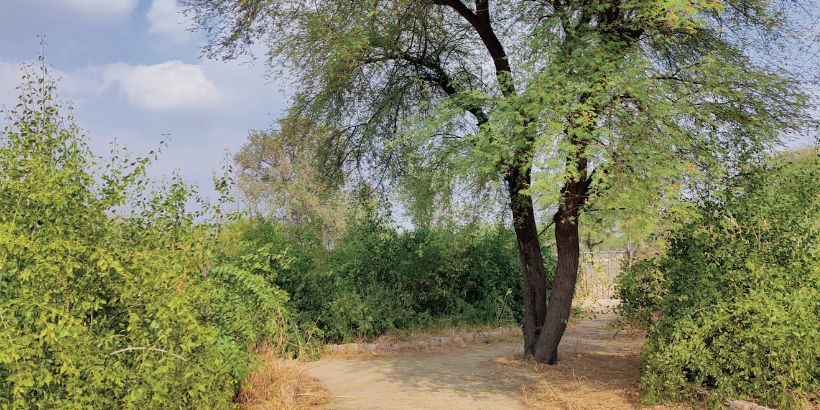
“Hannah Lewis describes a gift to a despairing world…There may be no single climate solution that has a greater breadth of benefits than mini-forests…[and] can be done by everyone everywhere.”—Paul Hawken, from the foreword
Mini-forests are simple to create, satisfying, and can get us closer to improving our climate and future. Read the foreword by Paul Hawken below about the importance of establishing mini-forests to combat the climate crisis.
The following is an excerpt from Mini-Forest Revolution: Using the Miyawaki Method to Rapidly Rewild the World by Hannah Lewis. It has been adapted for the web.
Featured image courtesy of Gaurav Gurjar.
Mini-Forest Revolution: A Foreword by Paul Hawken
It is rare that a book describing a climate solution flows like honey and reads like silk. It is equally uncommon to find an action that everyone can do. Hannah Lewis describes a gift to a despairing world, a way to change the Earth in practical, restorative, and substantive ways, a simple act that creates beauty and enchantment: a mini-forest.
If planting a mini-forest seems inadequate to the climate task at hand—reversing global warming—bear in mind that forests are thousands of mini-forests under one canopy. The extraordinary forests of the Boreal and the Congo were never planted. Mini-forests can be planted by you.
What Is A Mini-Forest?
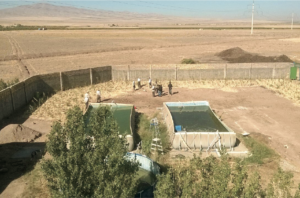
A newly planted mini-forest lines the perimeter of Iranian dairy farmer Bahram Torkaman’s property on the Qazvin Plain, just west of the capital Tehran. Courtesy of Bahram Torkaman.
Forests can cover vast areas as in the Amazon and Borneo. A mini-forest can cover vacant islands of land, a highway roundabout, a small portion of a playground in a nursery school.
One of the virtues of a Miyawaki mini-forest that Hannah Lewis describes so exquisitely is its potential ubiquity. There are hundreds of millions of prospective homes for mini-forests. And unlike the Amazon, they won’t be torched and replaced by soy and cattle.
There are calls to plant a trillion trees in order to “combat” climate change. The goal is to alter the climate crisis as quickly as possible. In these scenarios, trees are objects, sylvan “things” that capture carbon above and below the ground.
Tree plantations can be ghost towns, soundless because there are no birds. No birds because there are no insects. No insects because there are no blossoms, nectar, or worms.
Mini-Forests: A Climate Change Solution
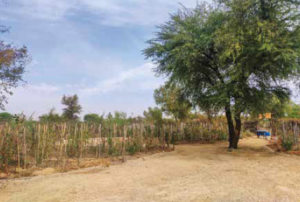
Gaurav Gurjar planted the Maruvan mini-forest in 2019 in the desert of Rajasthan, India. Courtesy of Gaurav Gurjar.
Standing armies of trees are the opposite of a forest. Trees are like us. We are social and so are trees. They thrive when they are interacting with a variety of other trees, shrubs, and plants. The Miyawaki Method arose from observations of ancient forests.
Dr. Miyawaki saw them as a living interactive entity, not a collection of trees. Mini-Forest Revolution takes us around the world to explore the extraordinary impact mini-forests are having within diverse types of terrain, climate, and location. Hannah is your tour guide.
There may be no single climate solution that has a greater breadth of benefits than mini-forests: water, shade, coolth, pollinators, food, birds, biodiversity, water storage, carbon sinks, clean air.
When given the space, mini-forests grow sidewise, not just up. They germinate, they spread, they enlarge. In open land, they are forest “seeds.” They generate themselves and all of life.
Much of what we hear about the climate crisis is the rate at which peril is increasing and the lack of sufficient action on all levels of agency. We are surfeited with news of the problems, probabilities, and impacts. It is almost too much to take in. What is missing that lends balance to the news is possibility.
Every problem is a solution in disguise, or it would not be a problem. The Miyawaki Method is crucial because it is a possibility that can be implemented by people everywhere, and as Hannah points out, by communities, classrooms, cities, clubs, families, and yes, even countries if they wake up. We do not have to wait for nations, banks, and corporations to act.
Combatting the Climate Crisis
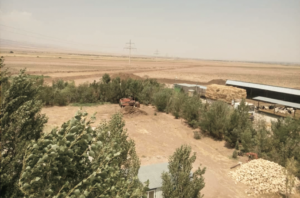
Torkaman’s farm mini-forest in 2021, after nearly five years of growth. Courtesy of Bahram Torkaman.
In order to fully understand the potential global impact of Miyawaki mini-forests on the climate crisis, we can geek out a bit and do some carbon accounting. There are an estimated 3,300 billion tons of carbon held in terrestrial ecosystems. That is four times more carbon than is in the atmosphere in the form of CO2.
If in the next thirty years, we increase the amount of carbon held in land by 9 percent, we will have brought back to earth all of the carbon dioxide emitted by coal, gas, and oil combustion, deforestation, and extractive agriculture since 1800.
That would mean increasing the amount of carbon in our lands by .3 percent per year. We know how to do that employing regenerative agriculture, wetland restoration, managed grazing, mangrove plantings, and reforestation.
These practices are at hand and being enacted, but they are impractical for an individual, family, or neighborhood to do. Mini-forests can be done by everyone everywhere. There are five billion acres of degraded land on Earth. A mini-forest will increase the amount of carbon in that land at least ten times, likely much more. If one-fifth of our degraded lands became mini-forests, we would achieve the goal of returning all the carbon emitted into the atmosphere from 1800 until now.
Mini-forests are where we touch life. We explore our place, discover what is native, restore our soil, nurture a small ecosystem that restores life. Watching a mini-forest grow several feet a year, watching it become more complex and beautiful in front our eyes, knowing that it has a direct impact on the biosphere and atmosphere—these relationships feed us.
They feed our longing to make a difference, our need to connect to what is regenerative and act. Facts do not change our minds. Actions change our minds. As we get involved with the acts of regeneration Hannah presents here, our sense of self and what is possible transforms. A mini-forest of ideas and hope is born within us as well.
—Paul Hawken
Recommended Reads
Recent Articles
Asparagus is a delicious vegetable with a layered history. How did this aspiring spear make its way from growing in the wild to appearing on our plates? The following is an excerpt from the The Seed Detective by Adam Alexander. It has been adapted for the web. “Nature gives us the key to every secret…
Read MoreChances are, you’ve seen cattails growing on the edge of your local lake or stream at least once or twice. Instead of just passing these plants, try foraging for and cooking them to create delicious seasonal dishes! The following excerpt is from The New Wildcrafted Cuisine by Pascal Baudar. It has been adapted for the…
Read MoreGarlic mustard: while known as “invasive,” this plant can be consumed in its entirety and has great nutritional value. Plus, the garlic-flavor is a perfect addition to any recipe that calls for mustard! The following are excerpts from Beyond the War on Invasive Species by Tao Orion and The Wild Wisdom of Weeds by Katrina…
Read MorePeregrine falcons, while known as predators, are essential to our environment. These stunning birds have a rich history, an interesting present, and an uncertain future. The following is an excerpt from Feather Trails by Sophie A. H. Osborn. It has been adapted for the web. Who Are Peregrine Falcons? Though relatively uncommon wherever it occurs,…
Read MoreWondering where to forage for greens this spring? Look no further than hedges, which serve as natural havens for wild greens and herbs! The following is an excerpt from Hedgelands by Christopher Hart. It has been adapted for the web. Food from Hedges: Salads and Greens Let’s start by looking at all the wild foods…
Read More

